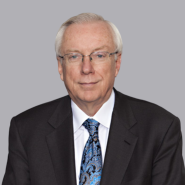Prophetic "Examples" Past, Present and Future
- July 14, 2021
- Article
Associated People
Associated Technologies
On July1 the USPTO issued a notice regarding prophetic examples reminding practitioners of the need to distinguish between examples actually performed and theoretical or paper examples. Generally, this admonishment is considered to apply to the chemical and biologic arts where cookbook-type examples are found presenting data. MPEP 608 and Janet Freilich, Prophetic Patents UC Davis L. Rev. (2019). The MPEP was silent on prophetic examples prior to the 1981 edition.
The omission of any discussion of prophetic examples in the MPEP prior to 1981 was probably because examiners were taught that any showing of unexpected results was to be in the form of either an oath or declaration under Rule 132, MPEP § 716 rev. 19, January 1969. It was explained to me by my SPE, that the reason was the oath or declaration filed with the application at that time contained no averments regarding the accuracy of the examples. This all began to change when the declarations added the language regarding compliance with the duty of disclosure which encompassed the assertions made in the specification. Today the MPEP has a more expansive view of prophetic examples as including “embodiments” which are commonly used in mechanical and electrical arts to describe alternative structures instead of “examples,” see MPEP § 214.02. These include the “means” for performing the function of a means plus function limitation. Generally, the present tense is used to describe such alternative embodiments, but care should be taken to avoid the use of the past tense if the specific means has not actually been practiced in the event one doesn’t actually work which could lead to an allegation of inequitable conduct bringing down the entire patent under prevailing case law.
The PTAB and Federal Circuit has considered prophetic examples in in a number of different contexts. Assertions in prophetic examples have been rejected as not providing “the factual evidence needed to support unexpected results.” Ex parte Callewaert, APPEAL 2019-005598 (Patent Tr. & App. Bd. Feb. 25, 2021) [Emphasis in original]. In contrast efforts to have prophetic examples in a reference disregarded have failed. See In re Antor Media Corp., 689 F.3d 1282 (Fed. Cir. 2012) where the Court held that prophetic examples in the prior art presumed to be enabling with the burden of proving non-enablement shifting to the patentee. Note that In re Antor involved a telecommunications network. In 629 F.2d 675 (CCPA 1980) the Court had held the same for prophetic patent examples. See also Ex Parte Cigan, APPEAL 2020-001230 (Patent Tr. & App. Bd. Sept. 14, 2020).
The PTAB in 2021 considered prophetic examples in Ex Parte Harriman, APPEAL 2020-004459 (Patent Tr. & App. Bd. Feb. 10, 2021) to provide in part the necessary enablement in view of the evidence of what was known in the art. Here the prophetic examples were to an immunoglobulin light chain were sufficient. The claims are directed to a genetically modified (transgenic) chicken grows human immunoglobulin. In this case the applicant was able to establish that one could practice the claimed invention based on what was described plus the knowledge of the art. In this case it appears that the examiner considered the claims to be too broad but failed to prove either a lack of written description or enablement.
The use of prophetic examples or embodiments is proper so long as it is clear that such are prophetic by labeling as such or using the present or future tense.
Recent Publications
5 IP Rules to Know to Protect Your Business in the United States (article in French)
Coaching INPI Newsletter










 Counseling & Strategic Advice
Counseling & Strategic Advice IP Transactions
IP Transactions Litigation
Litigation PTAB Proceedings
PTAB Proceedings Start-Up
Start-Up Technology Transfer
Technology Transfer Trademark & Designs
Trademark & Designs U.S. Patent Procurement (Application Drafting & Prosecution)
U.S. Patent Procurement (Application Drafting & Prosecution)








